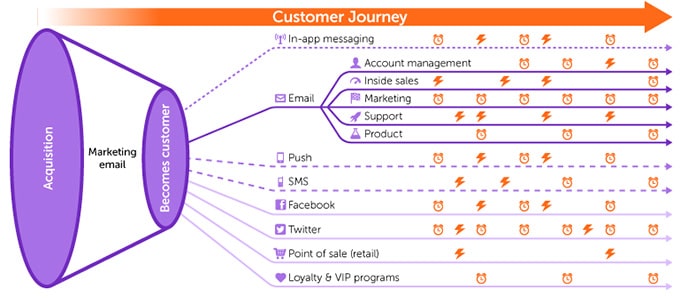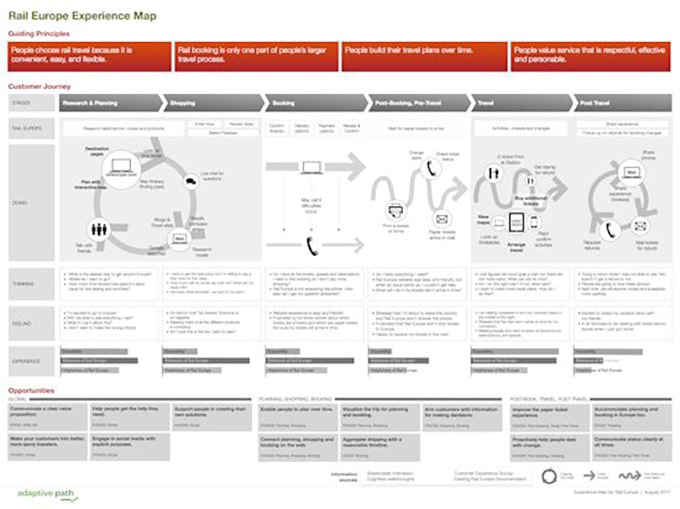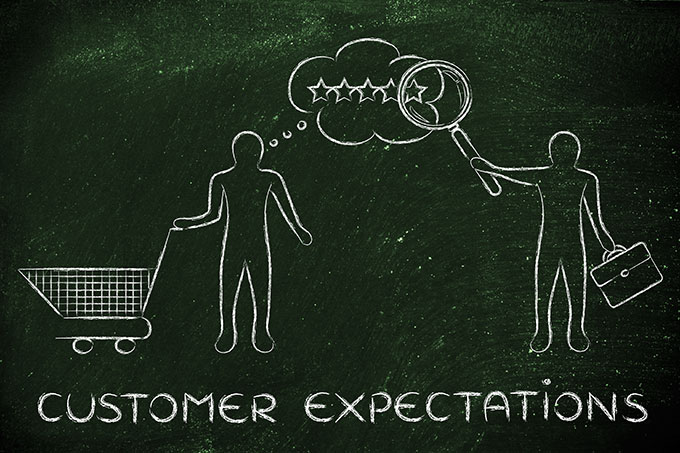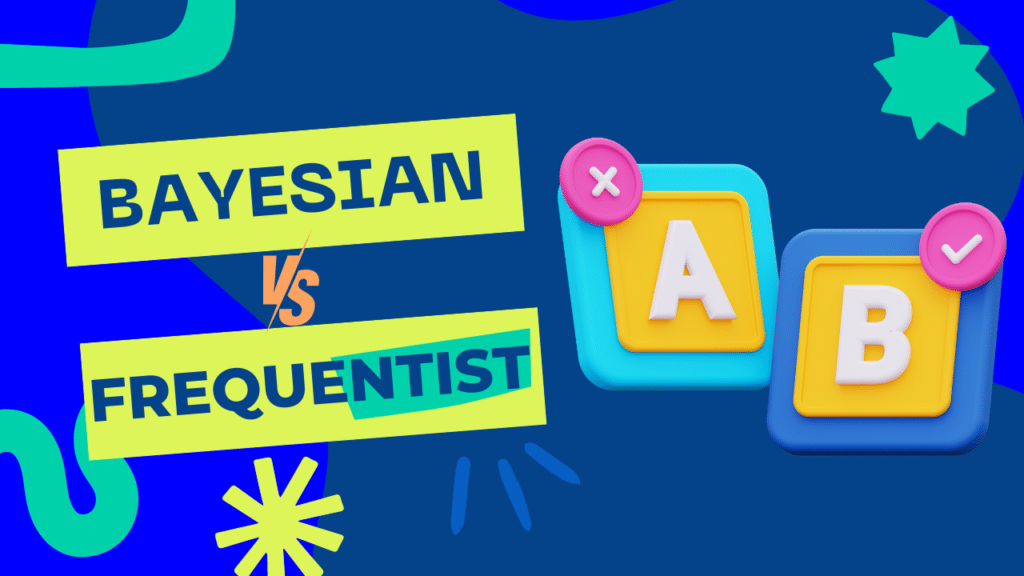Customer journey mapping is extremely popular and more companies are turning to this practice. In fact, a recent Google search of the term “Customer Journey Maps” turned up 5.3 million results.
What are customer journey maps, and why are they such a big deal?
In short, customer journey maps visually represent a customer’s relationship with an organization. They are supposed to allow marketers to understand customer needs and address them effectively.
Sounds great, right?
Unfortunately, customer journey maps are not easy to design and often fail to meet their objective.
According to a recent E-consultancy:
“Half of the respondents (50%) said there are a ‘lot of missing parts’ of the customer journey and only 5% have ‘a coordinated approach across online and offline’ parts of their business.”
This article will help to identify the problems with customer journey maps and offer practical solutions for fixing them.
Back to the basics: What are customer journey maps?
As I mentioned above, a customer journey map is a visual representation of every experience your customers have with you. It helps to tell the story of a customer’s experience with your brand from original engagement and hopefully, into a long-term relationship.
It also does the following:
- Tells the story of the customer’s experience: from initial contact, through the process of engagement and into a long-term relationship.
- Identifies a string of events that can happen before, during, and after your customer interacts with your product or service.
- Helps organizations move from a transactional approach to one that focuses on long term relationships with customers built on respect, consistency and trust.
- Identifies major interactions of customers with the organization, and the user’s experience at each point
In its most basic form, journey mapping starts by compiling a series of user goals and actions into a timeline skeleton.
Next, the skeleton is fleshed out with user thoughts and emotions in order to create a narrative.
Finally, that narrative is condensed into a visualization used to communicate insights that will inform design processes.
A customer journey map should include the following components: initial contact, engagement process, long-term relationship.
So why is it so important we get them right?
According to research by LogMeIn released in (2016) and presented in a co-hosted webinar titled New Findings Into CX in ANZ, 9 out of 10 customers leave after one bad experience.
Director of The Customer Framework, Andy Green explains;
“The customer journey mapping process engages stakeholders and leaders to create a clear, cross-functional understanding of what happens to customers across the organization and encourage consideration of processes from the customers’ point of view,”
The founder and CEO of Instinct Studios, Majid Shabir explains;
“It is difficult to say exactly how prevalent customer mapping is but it’s safe to say it’s not happening as much as it should be. It’s clear that when organizations develop a customer-centric model and respond to the needs of their customers, they experience higher levels of customer satisfaction, which is leading to improved sales and retention rates.”
A customer journey map takes many forms but typically appears as some type of infographic. Whatever its form, the goal is the same: to teach organizations more about their customers.
The benefits of customer journey maps include
- Helping organizations to easily identify customer objections across the whole buyer’s journey so organizations can address them
- Clarifying how different departments need to work together to address customer objectives
- Making it easier to develop a system for gaining customer feedback and improving customer experience
- Helping companies anticipate what needs to be considered so better business decisions are made
- Informing the different teams/departments within the company of user needs: For example, helping designers understand user perspective and motivation, helping copywriters understand user questions and feelings, helping managers understand customer experience so they can figure out how to improve the experience
- Allowing companies to see and approach things from a customer’s point of view
- Helping organizations learn more about their customers
- Helping companies learn about customer motivations, desires, expectations
Where Do Customer Journey Maps Go Wrong?
In an attempt to uncover the customer experience, companies can be led astray if the mapping exercise is not conducted effectively, producing maps that miss the mark or are completely useless. Below are some of the major pitfalls when conducting customer journey mapping:
1. Selecting the Wrong Journey Mapping Framework
One of the key elements of creating a successful Customer Journey Map is the map itself, especially, According to B2C;
“The framework developed to capture the outputs of the mapping process.”
However, According to a Nielsen Norman Group, Kate Kaplan;
“Over half (52%) of the responses from UX professionals were frustrations regarding the appropriate process and scope of journey maps “
The drawback is that not all frameworks are created equal, and choosing the wrong one can be misleading.
Also, the complexity of creating a successful Journey Map or simply not knowing where to start can create a lot of confusion.
The Solution: Select the Right Journey Mapping Framework
If you search the term “customer journey mapping” you will see a confusing array of information on the topic.
While everyone talks about journeys, they are often talking about different types of journeys used for different purposes.
Sometimes the differences are quite subtle.
For instance, a user experience and customer experience map can cover many of the same ideas. However, they are different and treating them as if they are the same is confusing for all concerned.
There are three main types of customer journey maps: User Experience Focused Maps, Marketing Automation Maps, and Customer Experience Maps.
1.User Experience Focused Maps
With UX focused maps, companies focus on understanding how users interact with their software, websites or applications.
Typically, they focus on understanding what users find intuitive and easy and what they do not. With this information, companies can design ways to make their software more simple and easier to use.
Techniques like click testing, web testing, card sorting and usability testing are used to document and understand how users actually interact with the software or website.
Below is an example of a user experience map. Notice how detailed the map is and how it considers all of the web pages and communications that a new user will receive.
2.Marketing Automation/Sales Journeys
Sales Automation Journey Maps help the sales and marketing team to map the customer’s path from Awareness to Prospect to Customer.
The focus is to optimize the customer’s journey through the marketing process and maximize sales.
With a large range of email marketing, CRM and marketing automation systems now available and multiple potential communication channels (SMS, Facebook, etc.) these maps have become very important in understanding exactly what each customer and segment of customers is experiencing.
Below is an example of a high-level journey from one well known vendor (Marketo). Notice how many types of communication are considered and how many different areas of the company are involved.
3.Customer Experience Journey Maps
Customer experience maps typically seek to document the entire journey: from awareness to sales, delivery and service.
Of course, different areas may have greater or less detail but the overall journey is the goal.
Using this type of map, organizations seek to document the existing customer journey so they can focus on:
- Improving the customers’ perceived experience with the organization, i.e. have more loyal customers.
- Improving the organization’s delivery of that experience, in order to reduce costs or streamline operations.
The Rail Europe Experience Map below is relatively well known and you can see that it covers the entire journey (no pun intended) from research to post travel.
- Articulate the business decisions the Journey Map will be used to inform
- Identify key questions the company hopes to answer
- Choose a framework that fits the objective, and whose design will capture required insights
- Make sure all points on the Journey Map contribute to the objective, and don’t distract from your end-goal
2. Failing to focus on key segments or personas and assuming all buyers undergo a common journey
 4 out of 5 brands claim to have a holistic understanding of key customer segments, yet just 22% of customers feel understood by brands.
4 out of 5 brands claim to have a holistic understanding of key customer segments, yet just 22% of customers feel understood by brands.This problem arises when companies don’t take the diversity of their customer base into account.
Remember; different customer segments with different attributes and goals will have different needs, expectations, journeys, and sentiments.
Moreover; different customer segments will naturally have different experiences with your organization.
So, consider the needs, questions, and emotions of a lower-income first-time homebuyer versus a wealthier buyer purchasing an investment property or vacation home. It’s essential that your journey mapping efforts explicitly target specific personas or customer segments.
The solution: Identify Representative Journeys For Specific Sets Of Target Customers
Where to begin?
Recognize that your customer base is made up of a diverse group of individuals and develop numerous, segmented views that are representative of diverse customer journeys.
You should also determine the start and end points for the journeys you’ll be studying. These guardrails may shift a bit as you continue your work (especially when you ask customers where they think the journey starts and ends), but having a stated focus will simplify the rest of the process.
Also keep in mind that each segment of prospective customers shares demographic, psychographic, and behavioral traits. These data points can be lumped together to create synthesized portraits of your ideal customers.
Above all, don’t make the mistake of assuming that all buyers’ journeys follow a similar path and not taking into account how different they can be. Many marketers fall into the trap of assuming the customer journey itself is not diverse, and that customers follow a common path.
Link to personas
An effective journey map needs to take the above into account by doing the following:
- Looking at different groups within your target customer base and identifying their behaviors, motivations and product usage
- Identifying typical decision-making and buying patterns for these different groups of target customer
- Identifying representative journeys for specific sets of target customers (aligned in behavior, motivations, attitude and product use)
- Showing general patterns in the decision-making and purchase paths
- Illustrating key forks on the road, detours, roadblocks, etc. that affect different groups of customers in different ways
- Finding the balance between developing numerous, segmented views that are representative of diverse customer journeys, while not over complicating the process and making the output less actionable.
3. Applying organizational views instead of customer perspectives
Companies often fall in the trap of approaching the customer journey from within the organization (retail store experiences, websites, customer service calls, etc.) rather than looking at it through the customer’s experience.
It used to be that offering a highly desirable product at a fair price would ensure you a steady stream of customers with little competition for their patronage.
Today, this no longer holds true.
Without customers, businesses have no value. This means it is essential for companies to understand how to acquire and retain customers.
In order to stay ahead of the competition, organizations need to rethink the ‘customer experience’ by taking the customer’s perspective.
However: Taking your customer’s perspective is a rigorous exercise that should cover all the phases of an individual’s decision-making process and (at least) acknowledge all the touchpoints – or points of contact, whether directly or indirectly connected to you – that can be used to gather information in pursuit of that decision.
The Solution: Opt for a Customer Centered Perspective
Before we can change our understanding of our customers, first we have to let go of some old ideas about markets and marketing; we then have to start thinking like our customers do.
Marketers used to believe the customer experience only started when the customer actually purchased a product or service. This turned out to be very short-sighted, because it ignored the customer’s initial interactions with the company or brand.
It can be very beneficial to look at the customers’ experiences at the time of first engagement with a brand.
In order to gain insight into your customers, you will first need to do extensive research, both analytical (surveys, Google Analytics, etc) and anecdotal (customer interviews, Q & A sessions).
You will want to find out what your target customers’ needs are, what their decision-making process is like, and how they prefer to communicate with or about your organization. When you have a real understanding of all these factors, you will be much better able to influence how they perceive your company and brand.
When you have collected plenty of data on your customers, use this knowledge to implement the following:
- Take on the customer’s view of the purchase decision process instead of the organization’s selling process
- Remember the customer experience begins at the first interaction with the company, long before they actual purchase your product or service
- Discover which communication channels (word of mouth, social media) most influence the customers’ decision-making process
- Measure the effectiveness of the company’s ways of communicating with customers
- Identification of the life stage of your target customers
- A way to document customers’ motivations, needs, and goals before, during, and after they interact with the product or service
- Increased understanding of the customers’ emotional journeys as well as their behavioral journeys
4. Focusing too much on the process/journey and not enough on customer expectations or emotions
 Companies often focus on the buyer’s journey and rarely ask: what does the customer expect?
Companies often focus on the buyer’s journey and rarely ask: what does the customer expect?As if that’s not enough, they also try to make the experience easy but often neglect to compare customer expectations with their actual experience
Excellent customer service and high customer satisfaction must start with understanding customer expectations.
When measuring customer satisfaction, companies generally ask customers whether their product or service has met or exceeded expectations. This is an important question to ask and is a key factor behind satisfaction.
If a customer feels like you did not deliver a service that was expected, they won’t come back and buy from you again. On the flip-side, if you deliver a service that exceeds customer expectations, you can bet they will come back to buy again, and tell all their friends about the experience.
The solution: Make Sure To Take Your Customer Expectations Into Account And Compare Them To The Actual Customer Experience.
Each customer has a preset expectation of what they hope to get out of doing business with your company and the company needs to live up to that expectation.
In short, there are two levels of customer expectations: desired and sufficient.
The desired level is what the customers hope to get out of their experience with the company, and the sufficient level is what they will deem acceptable.
Strive to achieve the desired level of customer expectations.
I think we can all agree what customers really want is a relationship. For example, many customers who were interviewed expressed a desire for an ongoing relationship with the same company representative.
So how can you better ensure customers’ expectations match their actual experience? A study by A. Parasuraman, Leonard L. Berry and Valarie A. Zeithaml which was posted by the MIT Sloan Review recommends companies start managing their promises.
This means to deliberately under-promise and over-deliver, so as to better your chances of exceeding the customer expectations. At the same time, make sure not to do so in a way that makes you less competitive.
Bottom line? There’s no one size fits all action that the company can take to improve the customers’ experience. To manage customer satisfaction, the company must take into account the situation the customer is facing and his/her emotional state and respond accordingly.
5. Assuming people’s experiences and feelings are logical and rational when they’re really not
The simple truth is that customer journey maps are based on assumptions and most journey mapping only looks at the rational side of human experience. And the problem is: human behavior and emotions are extremely complex and not always rational.
Think about a product you bought recently, a person you enjoy spending time with, or a passion you have. What drew you to that product, person or passion? Chances are your answer will be a combination of facts and feelings.
Emotion versus rationality often conflict with each other and can be a challenge when we are trying to make a decision. Sometimes our best option does not excite us while we are drawn to an alternative option for no apparent reason.
This can cause a major challenge for companies trying to market their products and services, as they struggle to figure out whether to take a rational or emotional approach. The truth is that the best approach is often a combination of the two.
The solution: Take Into Account All Aspects Of The Human Experience.
You need to remember that you are dealing with complex individuals and that human behavior is often NOT rational and is instead based on strong emotions.
Furthermore:
Remember you’re dealing with real people with complex emotions, pressures and expectations.
This means, you have to make sure to look at all the aspects that make up human experience: the conscious and rational experience, and the emotional or subconscious experience. When marketing, also keep in mind that the best approach often has elements of both rational and emotional experience.
It is also important that you distinguish between a moment of truth (any interaction with the company) and a pain point (when things don’t go as expected) and respond accordingly.
Considerations when conducting customer journey mapping
Use Real Data to Get to Know Your Users
When designing a customer journey map, it’s essential to get to know users through research and gathering data. The map needs to have analytical and anecdotal evidence and highlight users’ needs questions and feelings during each stage of interaction.
A common source of analytical data is website analytics, which are useful for helping you understand where your users are coming from and what they want.
But proceed with caution, because website analytics are easy to misinterpret. For example, just because you have a lot of clicks doesn’t necessarily mean the user experience is positive.
Social media, search data, and surveys are some other ways to collect analytical data.
Anecdotal data involves collecting accounts of actual user experiences. These are commonly gathered through customer interviews and by looking at what they are saying on social media.
In other words: first hand user experiences are extremely valuable when developing a customer journey map.
Ask the Right Questions
When surveying your users, it is essential to ask the right questions. You want to ask questions that take into account the user experience, such as:
- Where does the experience start (and finish)?
Remember that the customer experience starts with the first contact with your brand and ends long after they make a purchase. - What emotions are you trying to evoke in the customer?
You need to be clear on what emotions you are trying to evoke in your customers and a strategy on what actions you are going to take to foster these emotions. - What are your customers feeling entering the experience?
What issues are your customers dealing with when they come to you? What are their motivations, struggles and pain points? These considerations will influence their experience with your brand.
Understand how your customers feel and behave at different stages in the journey
In order to be effective, journey maps need to help managers, departments and stakeholders understand how their customers feel and behave at the different stages in their buyer’s journey.
This understanding allows them to identify both positives and shortcomings and develop concrete action steps.
Here are some things to remember:
- Identify positive and negative customer emotions and put them in context of customer behaviors, goals, expectations
- Don’t focus on just one customer interaction with the company, look at all of the interactions if possible
- Don’t forget to include performance indicators to identify areas of improvement, such as customer loyalty measures, customer satisfaction measures, and assessments of customer emotions at different stages of their journey
- Visualize the customer journey in a way that makes sense to stakeholders
The bottom line is this; for journey mapping to be successful, you need to really understand how your customers feel at each stage of the journey. Make sure to ask right the questions and do the necessary research until you have achieved this understanding. Only then will you be able to build a journey map that accurately represents your customers’ perspective.











